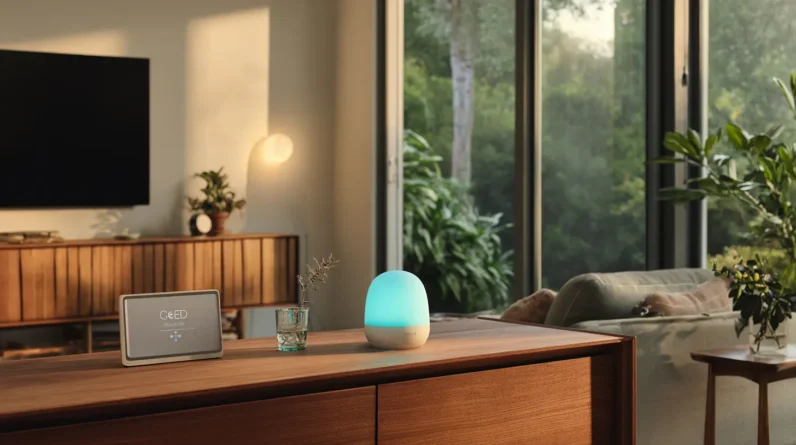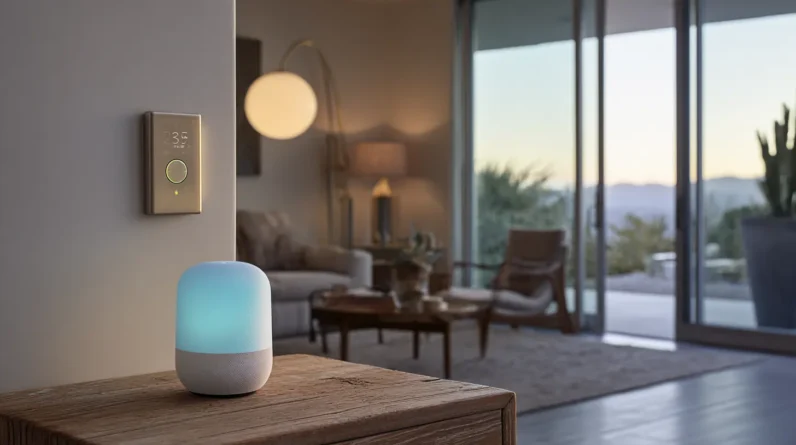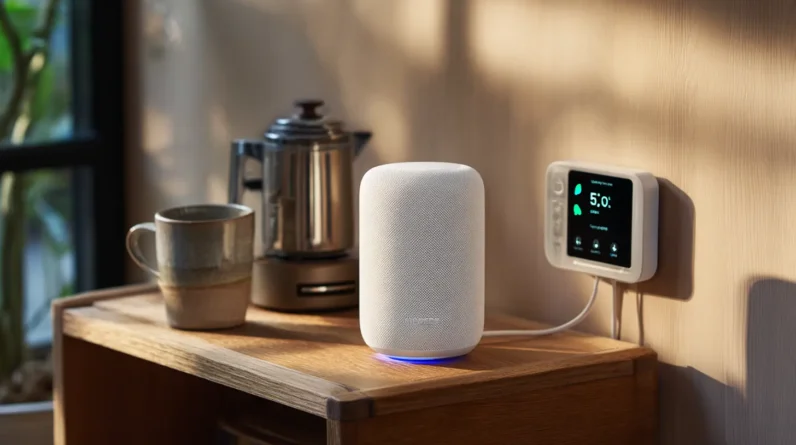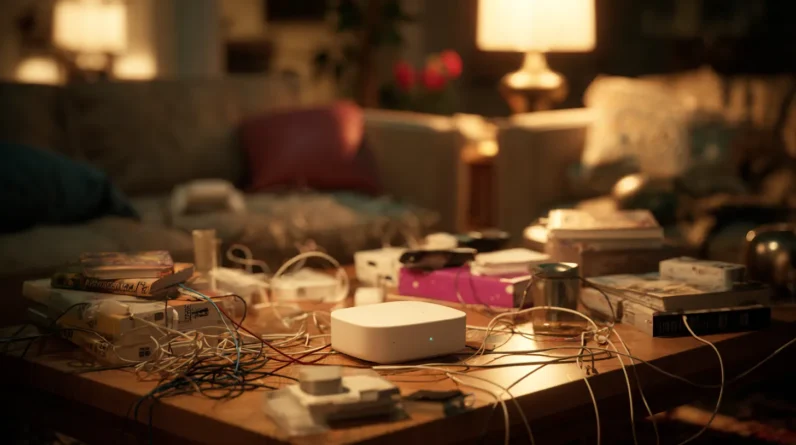
With the rapid advancement of technology, smart home devices have become increasingly popular, aiming to enhance convenience and efficiency in our daily lives.
However, this rise in connectivity also brings about significant cybersecurity risks that cannot be ignored.
This article explores the importance of cybersecurity in smart homes, delving into the potential threats and vulnerabilities that homeowners may face.
By understanding these risks and implementing best practices for securing smart home devices, individuals can ensure a safe and secure environment within their homes.
Key Takeaways
– Smart home technology offers benefits in energy efficiency.
– Weak passwords and outdated software make smart homes vulnerable to cyber attacks.
– Implementing best practices such as network segmentation, regular updates, strong passwords, and two-factor authentication can enhance smart home security.
– Passwords and encryption play a crucial role in ensuring the confidentiality and integrity of data in smart homes.
The Rise of Smart Home Technology
The increasing prevalence of smart home technology has become a noteworthy development in the field of household automation. Smart home automation offers numerous benefits, particularly in terms of energy efficiency.
The integration of smart devices and appliances allows for more precise control over energy usage, leading to reduced consumption and cost savings. For example, smart thermostats can automatically adjust temperature settings based on occupancy and weather conditions, optimizing energy usage without sacrificing comfort.
Additionally, smart lighting systems can be programmed to turn off when not in use or adjust brightness levels based on natural light availability. These energy-saving features contribute to a more sustainable and environmentally friendly household.
As smart home technology continues to advance, further innovations are expected to enhance energy efficiency even more profoundly.
Understanding the Cybersecurity Risks in Smart Homes
Understanding the potential risks associated with connecting household devices to the internet is crucial in maintaining the integrity and privacy of smart home networks. As technology continues to advance, so do cybersecurity vulnerabilities. It is important for homeowners to be aware of these risks and take appropriate measures to protect their personal data.
Some key considerations include:
Weak Passwords: Many users fail to change default passwords or use weak ones, making it easier for hackers to gain access.
Outdated Software: Failure to update software regularly can leave devices vulnerable to known security flaws.
Lack of Encryption: Without proper encryption, sensitive information transmitted between devices and the network may be intercepted by unauthorized individuals.
Insecure Wi-Fi Networks: Inadequate security settings on home networks increase the likelihood of unauthorized access.
Third-party Apps and Services: Connecting smart home devices with external applications or services may introduce additional vulnerabilities.
Best Practices for Securing Your Smart Home Devices
Implementing effective security measures is essential for protecting the integrity and privacy of internet-connected household devices. Smart home devices, such as thermostats, door locks, and cameras, are vulnerable to various cybersecurity risks. To mitigate these risks, it is crucial to follow best practices for securing smart home devices.
One important practice is network segmentation. By dividing a network into smaller segments or VLANs (Virtual Local Area Networks), the impact of any potential breach can be limited. This ensures that even if one device gets compromised, the attacker cannot easily access other devices on the network.
In addition to network segmentation, regularly updating firmware and software on smart home devices is critical in addressing IoT vulnerabilities. Manufacturers often release security patches and updates to fix known vulnerabilities and enhance device security.
By implementing these best practices, users can significantly reduce the risk of their smart home devices being exploited by cybercriminals while maintaining a secure environment for their personal freedom and privacy.
Best Practices For Securing Smart Home Devices:
1. Implement Network Segmentation
2. Regularly Update Firmware and Software
3. Use Strong Passwords
The Role of Passwords and Encryption in Smart Home Security
Passwords and encryption play a vital role in enhancing the security of internet-connected household devices. In the context of smart homes, where numerous devices are interconnected, ensuring the confidentiality and integrity of data becomes crucial.
The use of passwords, combined with encryption techniques, can significantly reduce the risk of unauthorized access to personal information or control over smart home systems.
To further enhance security, two-factor authentication is increasingly being implemented in smart homes. This involves using an additional layer of verification, such as a fingerprint or facial recognition, in addition to a password. Biometric authentication for smart home devices provides a more secure and convenient way for users to access their systems.
Future Trends and Innovations in Smart Home Cybersecurity
Advancements in technology and the growing ubiquity of interconnected devices necessitate continuous innovation in safeguarding the privacy and integrity of data transmitted within smart home ecosystems.
One future trend in smart home cybersecurity is the integration of machine learning techniques. Machine learning algorithms can analyze network traffic patterns, identify anomalies, and detect potential security breaches more effectively than traditional rule-based systems. By continuously learning from new data, these algorithms can adapt to evolving cyber threats and enhance the overall security posture of smart homes.
Another promising innovation is biometric authentication for smart home devices. Biometrics, such as fingerprint or facial recognition, provide an additional layer of security by verifying the identity of users before granting access to sensitive information or controlling device functionalities. This reduces the risk of unauthorized access and enhances user privacy within smart home environments.
As technology continues to advance, integrating machine learning capabilities and biometric authentication will be essential for ensuring robust cybersecurity in smart homes.
Frequently Asked Questions (FAQs)
What Are the Potential Risks or Vulnerabilities of Using Smart Home Technology?
Potential risks and vulnerabilities of smart home technology include cyber threats, such as unauthorized access or data breaches. Securing smart home devices requires precautions like strong passwords and regular software updates. Common mistakes in smart home cybersecurity should be avoided, while emerging technologies can enhance smart home security.
How Can I Ensure That My Smart Home Devices Are Protected From Cyber Threats?
Smart home device protection involves implementing cybersecurity measures to mitigate potential cyber threats. These measures may include regularly updating firmware, using strong passwords, enabling two-factor authentication, and employing network segmentation to isolate devices.
Are There Any Specific Steps or Precautions I Should Take to Secure My Smart Home Devices?
Precautionary steps and best practices should be taken to secure smart home devices. Implementing strong passwords, regularly updating firmware, and using a secure network are effective measures in mitigating cyber threats.
What Are Some Common Mistakes or Oversights That Homeowners Make When It Comes to Smart Home Cybersecurity?
Common misconceptions and oversights in smart home cybersecurity include neglecting regular updates, underestimating the importance of strong passwords, and failing to secure Wi-Fi networks. Regular updates are crucial for addressing vulnerabilities and ensuring optimal security.
What Are Some Emerging Technologies or Advancements in Smart Home Cybersecurity That We Can Expect to See in the Future?
Emerging technologies and advancements in smart home cybersecurity are expected to include more sophisticated encryption algorithms, machine learning-based anomaly detection systems, blockchain-based authentication protocols, and advanced intrusion prevention techniques for enhanced protection against cyber threats.
Conclusion
In conclusion, the significance of cybersecurity in smart homes cannot be overstated. As the popularity of smart home technology continues to rise, so does the need for understanding and mitigating the associated cybersecurity risks. Implementing best practices such as strong passwords and encryption is crucial for securing smart home devices.
Furthermore, staying informed about future trends and innovations in smart home cybersecurity is essential to stay one step ahead of potential threats. Only by prioritizing security can we ensure that our smart homes remain secure and impervious to cyber attacks.
Idiom used: ‘stay one step ahead’ … of potential threats and safeguard our privacy and the integrity of our smart home systems.







